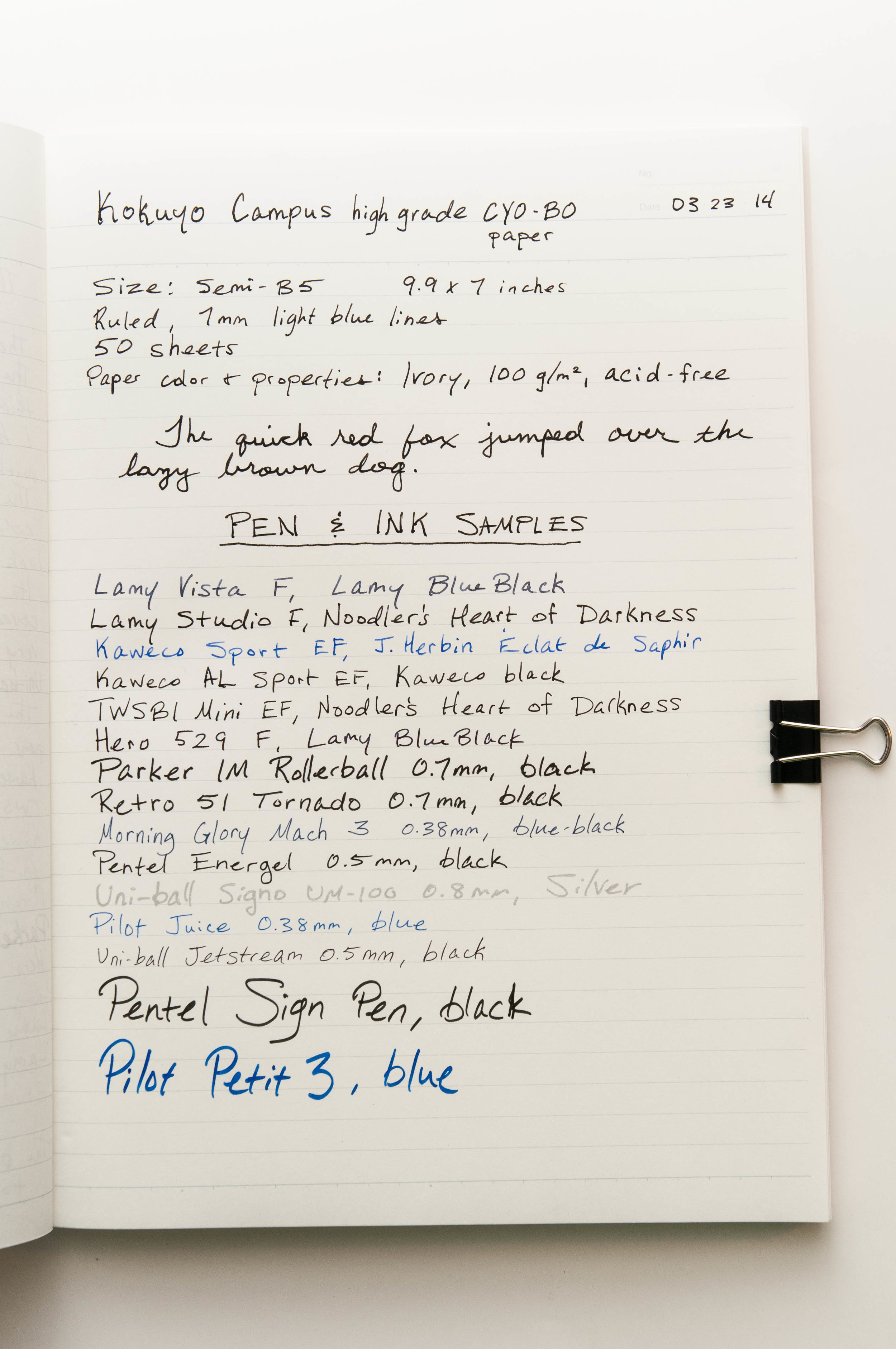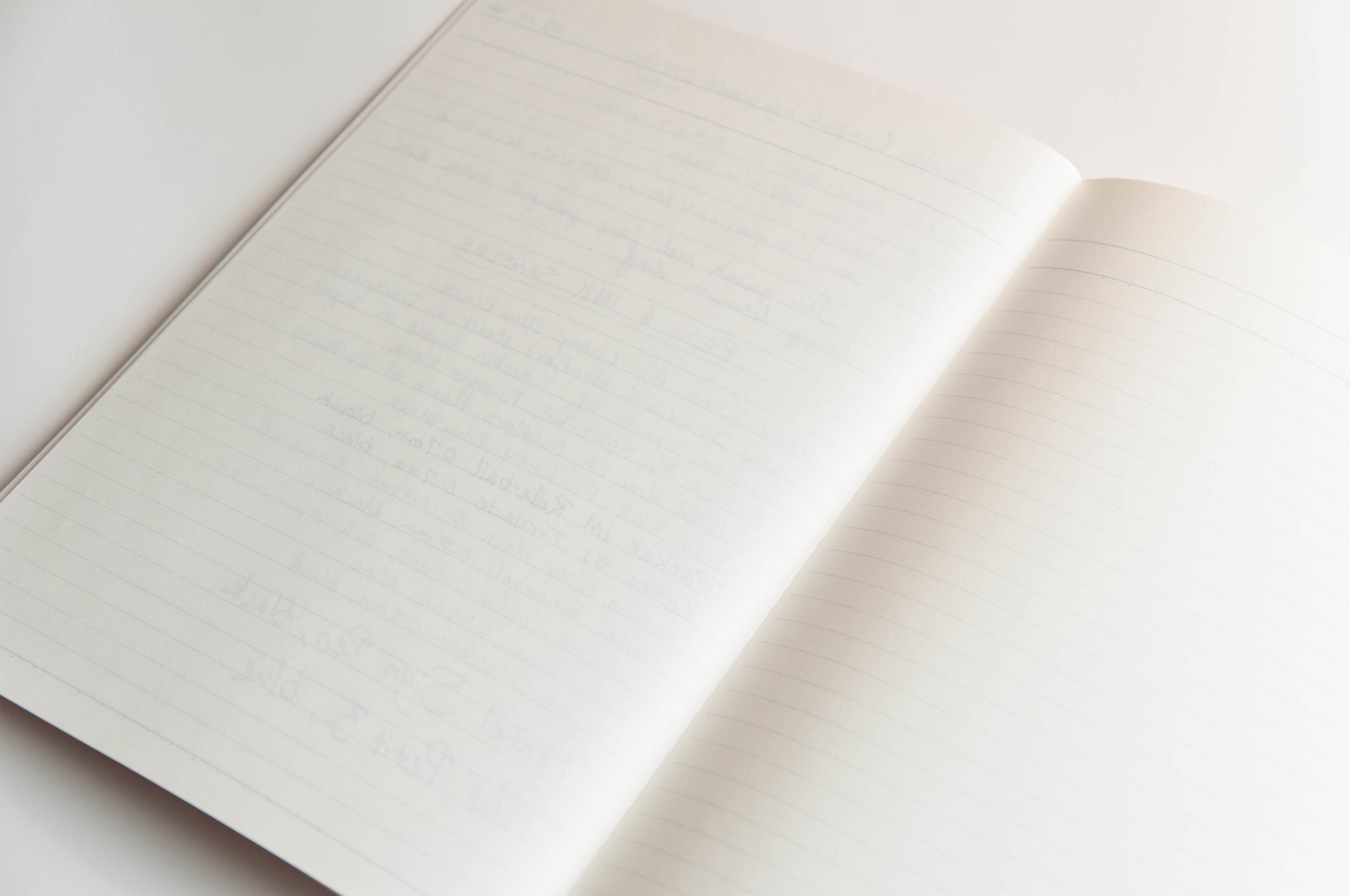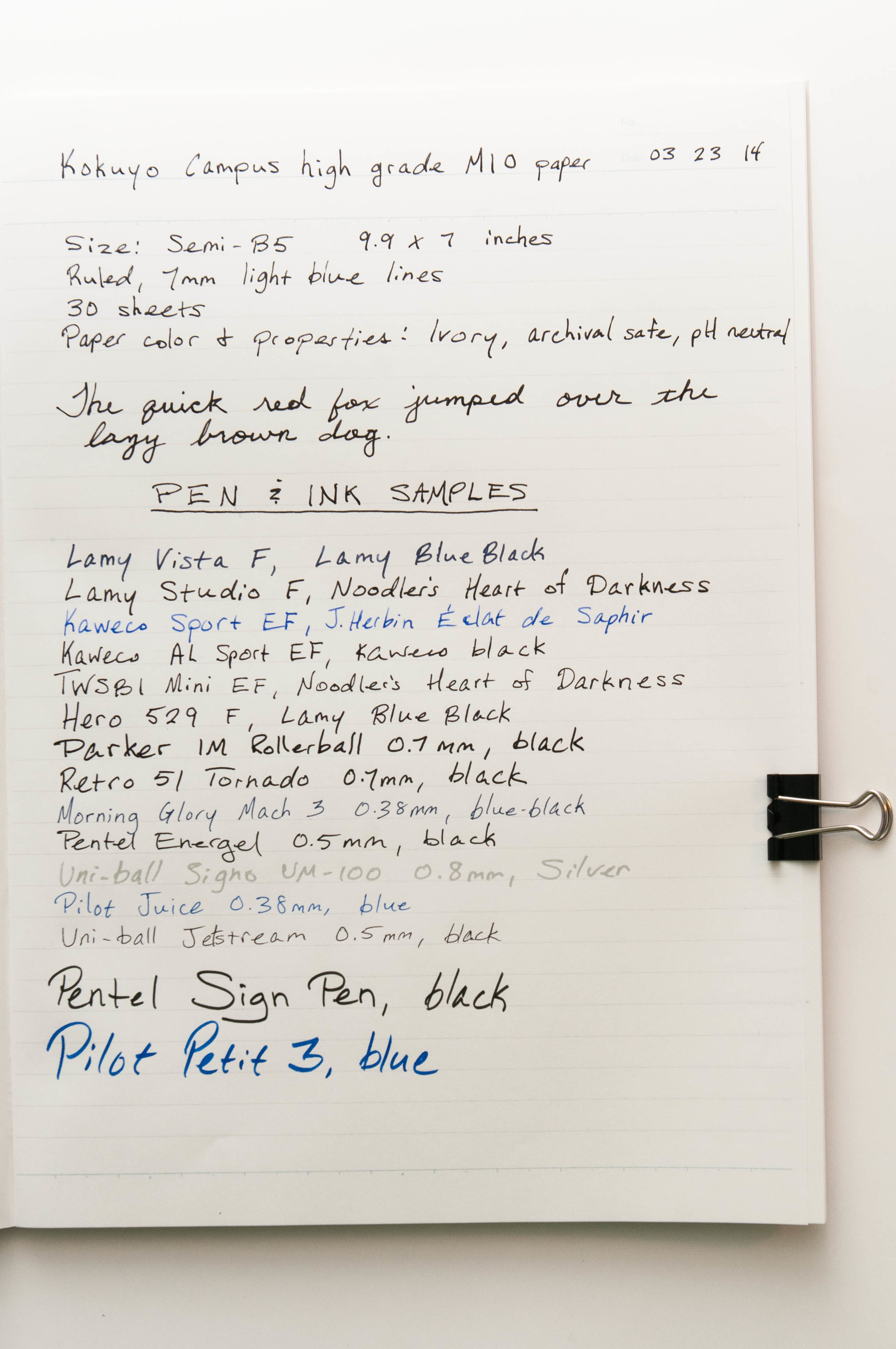In the endless search for the perfect notebook, I've acquired several softcover notebooks that don't hold up very well to every-day abuse and carry. While the soft cover usually makes the notebook more affordable (not always), they just don't seem to hold up for very long in my bag.
Turns out, Kokuyo has a product to solve my problem, plus a few more. The Kokuyo Systemic refillable notebook cover is a durable canvas cover that can hold two notebooks of your choice. Finally, a way to protect the various soft cover notebooks that I have. This means I'm much less picky about which notebooks I choose to carry about, because this cover essentially transforms the soft covers into a durable folio.
I ordered a semi-B5 cover from JetPens because I really enjoy the semi-B5 size that Kokuyo, Apica, and others sell. It's not huge, but it's still spacious. Of course, Kokuyo also sell a A5 and A6 size, and they all have two colors to choose from. The A5 and semi-B5 come in either Gray/Black or Gray/Red, and the A6 is available in Khaki/Brown or Khaki/Navy. Each cover includes one notebook, which is a nice bonus.
So, how does it work in practice? Awesomely.
The build
The cover is built well and should take years of abuse. The stitching is tight and accurate, and the transparent plastic sleeve that holds the notebook cover is thick enough to last a long time, but still pliable enough to make switching out notebooks a breeze.
It's difficult to tell in the product photos, but the two-tone color scheme is actually more than just an aesthetic touch – The top color (in my case, the gray) is a pocket on the front and back of the notebook cover. A deep pocket that has plenty of room for a smaller notebook, paper, or a couple of pens. I've really enjoyed have the outside pockets. This has been an awesome meeting companion.
A major downside for me is the elastic closure. Elastic closures are a big plus in my book for notebooks (ahem), but this one is weak. If you've ever used a Moleskine or a Rhodia, or any other notebook that has an elastic band to keep the book closed, I doubt any of them were as weak and wobbly as this one. I hoped that I might be able to tighten it if it were just tied to itself on the inside of the cover, but the ends are actually sewn into the outer seam. Bummer.
Apart from being weak, it still manages to hold the notebook shut – mostly. Don't put any loose papers inside thinking they will stay as you transport it.
Apart from that negative, I've been really pleased with the build of the cover. It also has a twin bookmark ribbon at the top so you can bookmark each book. Unlike a lot of notebooks that I've seen lately with ribbons, this one is nicely trimmed at an angle and finished (slightly burned, melted, singed, etc.) to keep from unraveling.
In use
From a practicality standpoint, the cover operates just like a folio. It lays flat on the desk or table (your lap works, but it's a little awkward since it doesn't have a stiff backing) and allows you open one of the two books. I've found it a bit awkward when first opening the cover because it always turns to the first page of the first notebook, and it takes a moment or two to open the second notebook. Not a big deal, and probably an error on my part due to clumsy fingers.
Unfortunately, the cover does not do well when turned back on itself. I've tried to do this a few times in the interest of saving space, but it just isn't comfortable to write on. The spine is thick and stiff and doesn't lay flat when it's folded back, so the writing service isn't level or steady. For some writers, this isn't a problem, but others I imagine it's a deal-breaker.
Like I said earlier, each cover comes with one notebook. In the semi-B5, it's a plain, black notebook that looks and feels like the standard Kokuyo bound notebook–like the Campus notebook.
It's a great paper. It isn't as great as Kokuyo's premium papers, like the MIO paper, but it's still a well-behaved and smooth paper for writing. Of course, it's also lined, so there's also that to consider.
Overall, this notebook cover is a home run for my use. If you're interesting in a sturdy cover for your soft notebooks, bound or spiral, check out the Systemic system.
(You can find more from Jeff online at Draft Evolution, Twitter, and App.net.)















